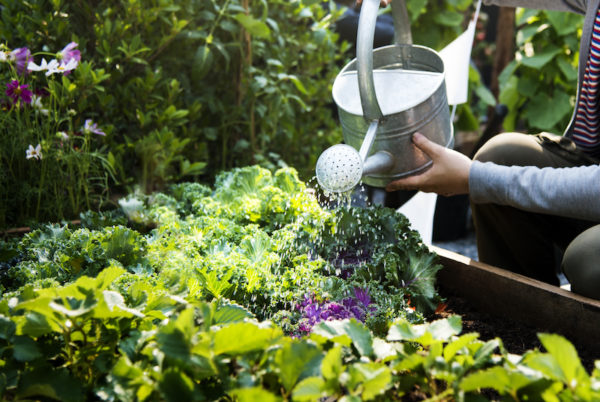You’re one in a melon!- Growing Watermelon- Tips and Tricks
 Its no doubt kids love watermelon... but how often do you drive pass the watermelon sellers at the side of the road and glance across to see the price? As of today watermelon is $4.00 per lb, but in this article i'll show you some easy and frugal ways in which you can plant your own watermelon during the pandemic and even after.
Its no doubt kids love watermelon... but how often do you drive pass the watermelon sellers at the side of the road and glance across to see the price? As of today watermelon is $4.00 per lb, but in this article i'll show you some easy and frugal ways in which you can plant your own watermelon during the pandemic and even after.
Watermelons are part of the big gourd family that includes cucumbers, squashes, and pumpkins. Experts believe sweet melons were grown by ancient Egyptians as far back as 2400 BC.
How to Grow Watermelon
 Melons are warm-season fruits that need a long, hot growing season to produce the juiciest harvest. Plan your garden space to allow room for the melon vines to grow several feet in all directions. Because melons are most flavorful when allowed to ripen on the vine, select varieties that will mature in the shortest amount of time, from 75 to 95 days. Keep in mind that a melon plant may only produce a few large fruits.
Melons are warm-season fruits that need a long, hot growing season to produce the juiciest harvest. Plan your garden space to allow room for the melon vines to grow several feet in all directions. Because melons are most flavorful when allowed to ripen on the vine, select varieties that will mature in the shortest amount of time, from 75 to 95 days. Keep in mind that a melon plant may only produce a few large fruits.
Watermelons need fertile soil and a long, hot growing season to produce good fruit. One of the main reasons the fruit fails to become sweet and mature is because of lack of heat during the ripening period.
Preparing your space
 Locate the planting space for melons in full sun. Only plant watermelons where they will receive at least 8 hours of sun per day. Consider how the vines will grow and allow room to walk through the garden without walking on or over them. Remember melons are heavy feeders so create a rich, water-holding soil by amending with compost and well-aged manure. Cow manure works best here.
Locate the planting space for melons in full sun. Only plant watermelons where they will receive at least 8 hours of sun per day. Consider how the vines will grow and allow room to walk through the garden without walking on or over them. Remember melons are heavy feeders so create a rich, water-holding soil by amending with compost and well-aged manure. Cow manure works best here.Planting Your Watermelon- Tips and Tricks
- Wait for the soil to warm to at least 70 degrees before planting melon seeds or transplants. This may mean waiting several weeks. Planting in cool weather or soil will set plants back and they’ll need more time to recover, so it pays to wait.
- Mix compost with the planting soil at a 1 to 3 ratio and form into hills about 12 inches tall to create the rich, loose soil that watermelons love.
- Then plant transplants 24” to 26” apart; with rows 6’ to 8’ apart. It’s important to remember that vines will spread in all directions, so don’t crowd your plants.
- Cover the soil around the seedlings with black plastic -- this holds the heat in, prevents weeds from growing and keeps the fruit from developing soil borne diseases.

Watering and Fertilization
 Insufficient water is one of the primary reasons that watermelon plants fail to thrive. You'll also need to pay attention to pests and disease and may want to do a bit of pruning to encourage optimal fruit production.
Insufficient water is one of the primary reasons that watermelon plants fail to thrive. You'll also need to pay attention to pests and disease and may want to do a bit of pruning to encourage optimal fruit production.Water
- Watermelons should be watered whenever the top inch of soil dries out -- they may need up to 2 inches of water per week during hot weather.
- Leave a hose to trickle at the peak of the planting mound to make sure the water actually gets to the roots and doesn't run off.
- For the sweetest flavor, reduce watering as the fruit gets bigger -- at the very end, the vines can be allowed to dry out to the point where they are slightly wilted.
Nutrients
- For lush growth, fertilize with a high nitrogen fertilizer up until the flowers and fruit begin to form, such as 10-20-10.
- After the fruit develops, switch to a high phosphorus fertilizer, such as 20-10-10, to encourage large, healthy fruit.
Disease
- Do not plant watermelons in beds where fusarium wilt or other diseases of the watermelon family have been a problem; this includes diseases of squashes, cucumbers, gourds, and other melons.
- Avoid watering the leaves of the plant to help prevent foliar disease -- water at ground level only.















No comments:
Post a Comment